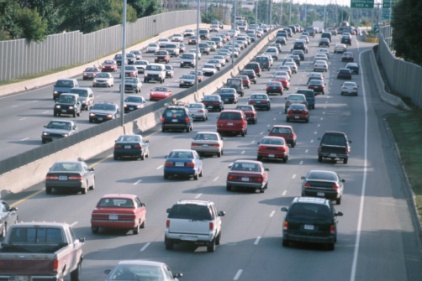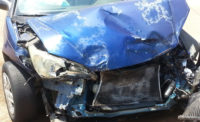 It’s official: Americans are ignoring the warnings about the dangers of distracted driving and continuing to use their cell phones while behind the wheel.
It’s official: Americans are ignoring the warnings about the dangers of distracted driving and continuing to use their cell phones while behind the wheel.
A new survey by the U.S. Department of Transportation's National Highway Traffic Safety Administration (NHTSA) -- released in conjunction with National Distracted Driving Awareness Month -- shows that at any given daylight moment across America, approximately 660,000 drivers are using cell phones or manipulating electronic devices while driving.
That means that despite numerous public service campaigns intended to alert drivers to the dangers of distracted driving, the number of people doing it has held steady since 2010.
Distracted driving takes a toll
According to separate NHTSA data, more than 3,300 people were killed in 2011 and 387,000 were injured in crashes involving a distracted driver.
"Distracted driving is a serious and deadly epidemic on America's roadways," said U.S. Transportation Secretary Ray LaHood. "There is no way to text and drive safely. Powering down your cell phone when you're behind the wheel can save lives – maybe even your own."
"Many drivers see distracted driving as risky when other drivers do it, but do not recognize how their own driving deteriorates," said NHTSA Administrator David Strickland.
The new data include statistics from the 2012 Distracted Driving Attitudes and Behaviors Survey and the 2011 National Occupant Protection Use Survey on Driver Electronics Use, as well as the 2011 Distraction Fatality Analysis Reporting System (FARS) data. All three reports are being highlighted in the premier issue of NHTSA's SAFETY 1N NUM3ERS online monthly auto safety newsletter.
So far 39 states, the District of Columbia, Puerto Rico, Guam and the Virgin Islands ban text messaging for all drivers. Also 10 states, the District of Columbia, Puerto Rico, Guam and the Virgin Islands prohibit all drivers from using handheld cell phones while driving.
One in four willing to place a call
Almost half of drivers said they answer an incoming call and one in four drivers are willing to place a call on all, most, or some trips. Slightly fewer are willing to make a call while driving compared to 2010 (28% to 24%), but there is little if any change in those who answer a call while driving (52% to 49%). Considering that in 2011 there were almost 212 million licensed drivers in the America, about 102 million drivers were answering calls and 50 million drivers were placing calls while driving.
To prevent distracted driving, the Department of Transportation recommends that drivers:
- Turn off electronic devices and put them out of reach before starting to drive.
- Be good role models for young drivers and set a good example. Talk with your teens about responsible driving.
- Speak up when you are a passenger and your driver uses an electronic device while driving. Offer to make the call for the driver, so his or her full attention stays on the driving task.
- Always wear your seat belt. Seat belts are the best defense against other unsafe drivers.

